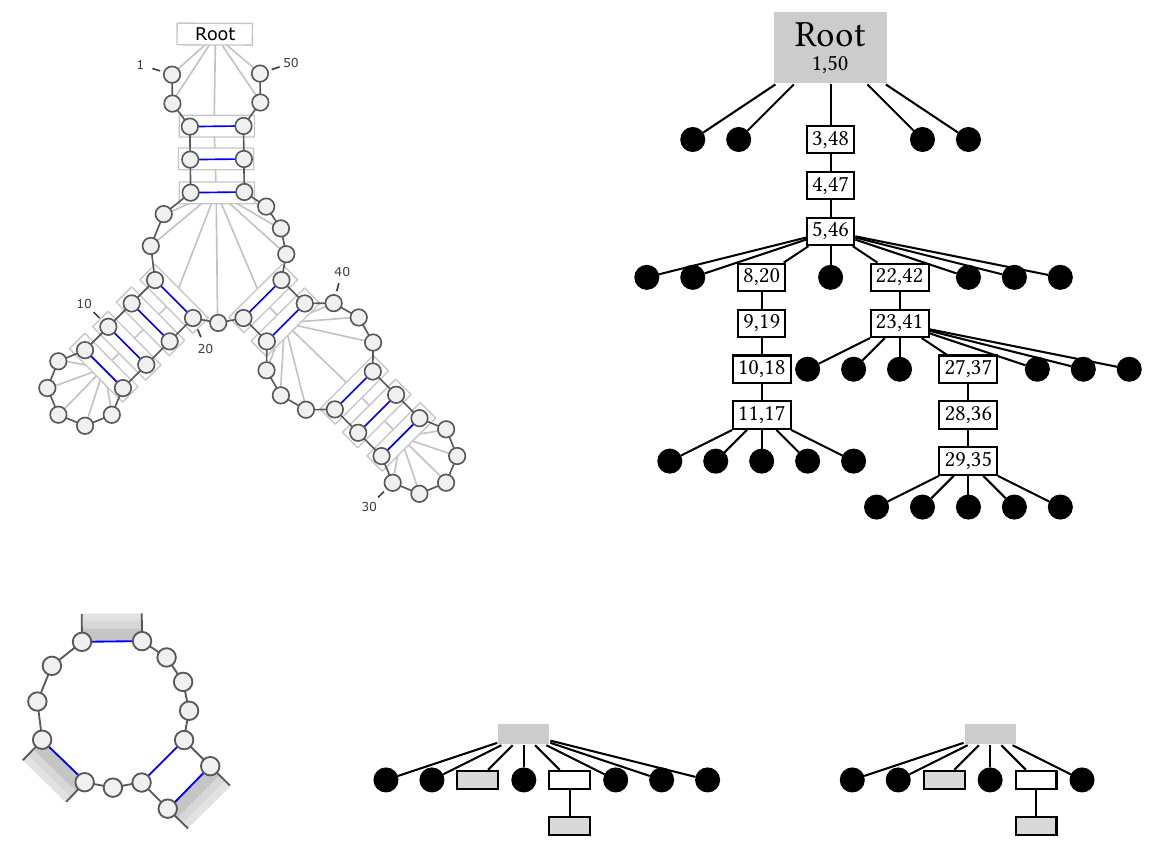Counting Designs
 This is the homepage of a collaborative research project, dedicated to the enumeration of designable sequences for a variety of design objectives.
This is the homepage of a collaborative research project, dedicated to the enumeration of designable sequences for a variety of design objectives.
The problem of RNA design attempts to construct RNA sequences that performs a predefined biological function, identified by several additional constraints. One of the foremost objective of RNA design is that the designed RNA sequence should adopt a predefined target secondary structure preferentially to any alternative structure, according to a given metrics and folding model. It was observed in several works that some secondary structures are undesignable, i.e. no RNA sequence can fold into the target structure while satisfying some criterion measuring how preferential this folding is compared to alternative conformations. In this paper, we show that the proportion of designable secondary structures decreases exponentially with the size of the target secondary structure, for various popular combinations of energy models and design objectives. This exponential decay is, at least in part, due to the existence of undesignable motifs, which can be generically constructed, and jointly analyzed to yield asymptotic upper-bounds on the number of designable structures.
A manuscript is currently under review at ACM-BCB 2019.
The implementation of the various algorithms used in this study is freely available from its GitLab repository.
This project was implemented by Hua-Ting Yao (AMIBio@Polytechnique · Univ. McGill), Cédric Chauve (Simon Fraser University), Mireille Régnier (AMIBio@Polytechnique) and Yann Ponty (AMIBio@Polytechnique)